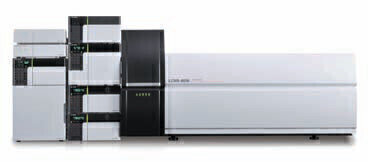Mass Spectrometry & Spectroscopy
Triple Quadrupole Mass Spectrometer Makes Ultra-Fast Detection Speeds a Reality
Nov 18 2011
Ultra-fast triple quadrupole measurement times are now a reality with the release in the UK of Shimadzu UK’s LCMS-8030 Triple Quadrupole Mass Spectrometer. Combining an unmatched scanning speed with the power of triple quadrupole mass spectrometry provides a major boost to lab productivity and gives researchers the opportunity to get more information for less effort. The instrument is ideal for researchers doing lots of method development work that are facing the challenge of needing to detect more target analytes with greater sensitivity in hundreds of samples per day. Key applications include food and environmental analysis, drugs of abuse screening as well as materials analysis.
The system offers researchers doing method development the capability to gain more information for less effort. A single injection will provide a full scan, multiple reaction monitoring (MRM) transitions and pos/neg data at the same time to allow matrix effects to be seen more clearly. The LCMS-8030 allows researchers to make quantification and confirmation measurements in a single scan of any compound, which is ionised to either a positive or negative ion. Shimadzu’s patented power supply technology enables the shortest loop time to create positive and negative ion data in the quickest time. Without sacrificing sensitivity or resolution, the instrument is capable of performing ultra-fast mass spectrum measurement speeds of 15,000 u/sec and ultra-fast polarity switching (15msec) to capture the most information without signal deterioration. Coupling the LCMS-8030 with Shimadzu’s Nexera UHPLC enables UHPLC performance to be maximized by offering users reliable and accurate detection of peaks only one-second wide.
The combination of the LCMS-8030 with Nexera creates a unified platform that provides unmatched qualitative and quantitative analysis as well as accelerated workflows for high-throughput analysis. Unattended, overnight operation is made possible by means of automated optimization of analytical conditions for each quantitative target compound.
Digital Edition
ILM 49.5 July
July 2024
Chromatography Articles - Understanding PFAS: Analysis and Implications Mass Spectrometry & Spectroscopy Articles - MS detection of Alzheimer’s blood-based biomarkers LIMS - Essent...
View all digital editions
Events
Jul 28 2024 San Diego, CA USA
Jul 30 2024 Jakarta, Indonesia
Jul 31 2024 Chengdu, China
ACS National Meeting - Fall 2024
Aug 18 2024 Denver, CO, USA
Aug 25 2024 Copenhagen, Denmark



.jpg)
24_06.jpg)













